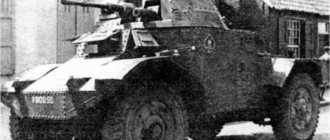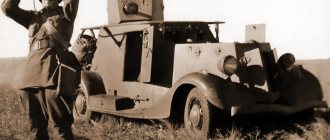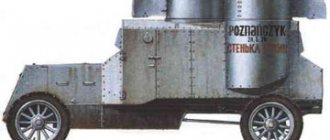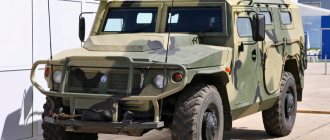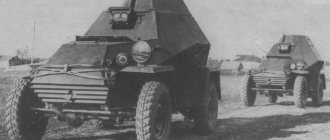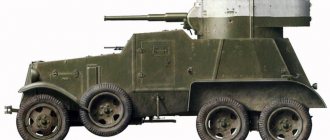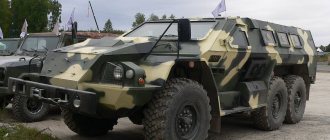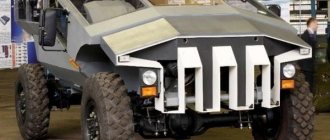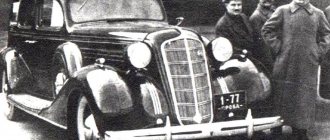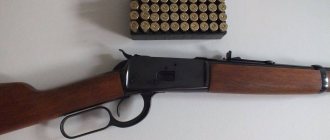Armored car type
Armored car type
| M3A1 Scout Car | |
| M3A1 Scout Car in British Army service, 1942. | |
| Type | Armored car |
| Place of origin | United States |
| Service history | |
| Used | See Operators |
| Wars | World War II Second Sino-Japanese War Chinese Civil War Hukbalahap Uprising Greek National Revolution Greek Civil War 1948 Arab-Israeli War Costa Rican Civil War 1958 Lebanon Crisis First Indochina War Algerian War Civil War in Laos Civil War in Cambodia Congo Crisis Portuguese Colonial War Civil War in El Salvador |
| Production history | |
| Designer | White Motor Company |
| Developed | 1939 |
| Manufacturer | White Motor Company |
| Produced | 1939–1944 |
| No built | 20 894 |
| Characteristics | |
| Weight | 6.25 short tons (5.67 t) |
| Length | 18 ft 5 in (5.61 m) |
| Width | 6 ft 8 in (2.03 m) |
| Height | 6 ft 5 in (1.96 m) |
| Crew | 2 |
| Passengers | 6 |
| Armor | Maximum 0.5 inches (13 mm) |
| Main weapons | Browning .50 cal. M2 |
| Secondary weapons | 1-2 x .30 cal M1917 Browning or M1919 Browning machine guns |
| Engine | 6-cylinder in-line petrol Hercules JXD with 110 hp. (82 kW) |
| Drive | Wheeled 4x4 |
| Suspense | Springs |
| Fuel tank capacity | 30 US gal (110 L) |
| Operating range | 250 miles (400 km) |
| Maximum speed | 50 mph (80 km/h) |
| Recommendations | Bishop [1] and Foss [2] |
M3 Scout Car
(known as
the White Scout Car
in British Commonwealth service) was an American-made armored vehicle.
The original M3 Scout Car was produced in limited numbers, and the improved M3A1 Scout Car
was widely used during World War II and after.
Design[edit]
The main production variant, the M3A1 Scout Car, was a lightly armored, open-top vehicle armed with a machine gun and four-wheel drive, intended for use as a reconnaissance vehicle. The M3A1 Scout Car was crewed by a driver and commander, while there was room in the rear for six additional passengers. [12]
Powered by a Hercules JXD 6-cylinder petrol engine producing 110 hp. (82 kW), the M3A1 ID vehicle had a maximum road speed of 50 mph (80 km/h) and a 30 US gallon (110 L) fuel tank gave a maximum range of 250 miles (400 km). Four-wheel drive and a bumper-mounted release roller allowed it to cross a 1.5-foot (0.46 m) wide trench and climb a 1-foot (0.30 m) step, with a maximum wading depth of 28 inches (0.30 m). 71 m). [1] [2] [3] [4]
The M3A1 Scout Car's armored hull was manufactured by Diebold Lock and Safe Company, it had a maximum armor thickness of 0.5 in (13 mm) and had an open top that provided good fields of vision but did not protect the occupants above. A canvas cover was provided for protection from bad weather. Underbody protection was also limited, giving little protection to the car's occupants from the effects of mines. [1] [2] [5]
The M3A1 Scout Car was typically armed with an M2 Browning .50 caliber heavy machine gun and one or two M1919 Browning .30 caliber medium machine guns, all mounted on a skate rail on which hinge mounts could be moved. Thanks to the open top, passengers could also use personal weapons. [1] [2] [6]
Construction[edit]
Hull and armor[edit]
The body was assembled from steel armor plates, fastened with bolts and rivets. The frontal armor plate of the hull, located in front of the radiator, was installed at an angle, which provided better protection, increasing the thickness of the armor and provoking more ricochets.
| M3 Scout Car reservation | |
| Armor type | rolled steel surface hardened |
| Body forehead (top), mm/deg. | 13 / 30° |
| Body forehead (bottom), mm/deg. | 6 / 30° |
| Hull side, mm/deg. | 6 / 0° |
| Hull feed, mm/deg. | 6 / 0° |
| Housing roof, mm | 6 / 85°, mostly open |
Weapons[edit]
The armored personnel carrier, as a rule, was armed with a 12.7 mm machine gun mounted above the control compartment on a special rail using movable M22 machines, which made it possible to move the machine guns along the entire perimeter of the body, as well as 2 7.62 mm machine guns mounted on the sides. Boxes with machine gun belts were placed in two boxes located on the sides of the body.
Engine and transmission[edit]
The armored personnel carrier was equipped with a new in-line 6-cylinder water-cooled Hercules JXD carburetor engine developing 110 hp. Mechanical transmission.
Chassis[edit]
Wheel formula 4x4, single wheels, pneumatic tires, suspension on leaf springs
History[edit]
Development[edit]
M2 reconnaissance vehicle
M2A1/M3 reconnaissance vehicle
M1 reconnaissance vehicle
M1 Scout Car
was the first of a new series of armored vehicles developed by the White Motor Company for the US Army.
Tested in 1934, the M1 Scout Car was an improvised open-top four-wheel drive vehicle based on the design of a White commercial ½-ton truck. It weighed 3.85 short tons (3.49 t) and was powered by a 75 hp engine. (56 kW) and had a top speed of 50 mph (80 km/h). The M1 Scout Car had a crew of four, a maximum armor thickness of 0.5 inches (13 mm), and was armed with machine guns mounted on static mounts inside the vehicle. Seventy-six M1 Scout Cars were delivered to the US Army. [7] [8] [9] M2
Scout Car
was a development of the M1, tested in 1935. Almost identical looking, the M2 was larger and more powerful, designed with as many commercial components as possible to keep costs down and could accommodate a crew of seven.
The M2 Scout weighed 3.95 short tons (3.58 t) and was powered by a 94 hp engine. (70 kW) and maintained a top speed of 50 mph (80 km/h). Twenty M2 Scout Cars were delivered to the US Army. [7] [10] [11] M2A1 / M3
Scout Car
, later renamed the
M3 Scout Car
, was a further development of the M1 and M2 Scout cars. The M2A1/M3 Scout Car retained the 94 hp engine. (70 kW) and had a top speed of 60 mph (97 km/h). 64 M2A1/M3 reconnaissance vehicles were produced, all assigned to the 7th Cavalry Brigade. [7] [8] [12] [13]
M3A1 Scout Car
M3A1 interior
M3A1E3 with 37 mm M3 cannon
M3A1 Scout Car
M3A1 Scout Car
was the final development of the series. The main exterior differences from the M3 were the widening of the body over the fenders, the removal of the M3's tailgate, and the addition of a front roller. Internally, the M3A1 had an improved engine and was equipped with a machine gun mount. A total of 20,918 examples were produced between 1939 and 1944. This was the only version served outside the US. [1] [2] [7] [6] [14]
M3A1E1 Vehicle ID
was designed to increase the range and fuel economy of the vehicle, it was powered by 81 hp. (60 kW) Buda-Lanova 6DT-317 six-cylinder diesel engine. A total of 3,340 were produced, all sent to the Soviet Union. [7] [15]
M3A1E2 Scout Car
there was a version with an armored roof.
The M3A1E3 Scout Car
was an experimental version equipped with a pedestal mounted 37 mm M3 cannon.
The M3A1 Command Car
was the command version, equipped with an armored screen and additional side armor. [16]
The M2 Half Track was developed from the M3A1 Scout Car, adding half tracks to the rear of the car. The post-war BTR-40 was a Soviet copy of the M3A1 reconnaissance vehicle. [17]
Service [edit]
General George Patton's modified M3A1 scout car
British White Scout used as an ambulance
US Army M3A1 reconnaissance vehicle
The M3A1 was used by US Army cavalry units in the intended cavalry role during the North African Campaign and the Invasion of Sicily, used for reconnaissance, screening and as an armored command vehicle. The M3A1 was fast and reliable, making it popular with aircrews. However, it was considered a major disappointment for US Army service, primarily due to its poor off-road performance and lack of overhead protection. Cavalry units were forced to supplement it with M2 and M3 tracks. [5] [7] [18]
During 1943, most US Army units replaced the M3A1 with the M8 armored car and the similar M20 utility vehicle, although the M3A1 was retained for rear security and convoy escort duties. A small number of M3A1s were used in Normandy. Several M3A1s were used by the United States Marine Corps in the Pacific Theater, but none saw combat. [2] [19]
General George Patton used the M3A1 as a command vehicle, modified with additional armor and a raised fighting compartment. [7]
A total of 11,401 M3A1 Scouts were delivered to US allies under Lend-Lease, 6,987 were delivered to the British Commonwealth, 3,310 to the Soviet Union and 104 to the Chinese Nationalist Army. Some were also supplied to parts of Free Belgium, Free France, Czechoslovakia and Poland. [20] [21] [22]
King George VI inspecting troops from a white reconnaissance car
Soviet M3A1s of the 1st Guards Mechanized Corps, Vienna, 1945.
In British Commonwealth service, the White Scout Car was viewed more as an armored truck, which is reflected in the designation Truck, 15cwt, 4x4, Armored Personnel
, and was used in a variety of minor roles issued to engineers, artillery (as an observation vehicle for field artillery observers), medical (as a protected ambulance) and communications; in the Royal Armored Corps tank and armored car corps he usually served at squadron or regimental headquarters. It was used by British Commonwealth forces in all theaters except Burma. [2] [7] [8] [16] [21]
In service with the Red Army, the M3A1 was used as an armored personnel carrier by brigade and corps reconnaissance units, motorcycle battalions and regiments operating alongside the BA-64. The M3A1 was also used as an armored command vehicle and an artillery tractor for the 76 mm ZIS-3 field gun, although the towing device proved unreliable, the M3A1 remained in service throughout the war. [8] [23]
The Chinese National Army received M3A1 Scout vehicles from 1942 and used them throughout the Second Sino-Japanese War and the Chinese Civil War.
After the war, many vehicles were sold, mainly to countries in Asia and Latin America, remaining in Soviet service until 1947.
Several vehicles were used by Israel in the 1948 Arab–Israeli War. At least one Israeli M3A1 has been modified with top armor and a rotating turret. France used its M3A1s in the First Indochina War [24] and the Algerian War. [22]
By the end of 1990, the only country with M3A1s remaining was the Dominican Republic. [ citation needed
]
History[edit]
The American Army was the first to come to understand the fact that a combat vehicle should only be a means of delivery and subsequent evacuation of a reconnaissance group and, if necessary, be able to cover its retreat with fire. The American War Department had very strict requirements for such a reconnaissance vehicle, especially by the standards of the early 1930s. Among other things, the US military wanted the armored car to have all-wheel drive. In the documentation, the armored car received the official designation Scout Car (scout car), and in everyday life, both then and in the future, it was often called simply “scout”, omitting the official alphanumeric index that was adopted in the US Army.
The White Motor Company, located in Cleveland, decided to respond to the competition announced by the American military. From the very beginning of the twentieth century, this company of the White brothers specialized in the production of trucks, and in 1932-1933, due to a significant drop in sales, which was caused by the consequences of the Great Depression, the company was actively looking for new partners and customers. In those years, the solvency of the American military department could not raise any questions among the management of the White Motor company. Just at the same time, it absorbed the Indiana company, and they had a suitable chassis of a light all-wheel drive 1.5-ton White-Indiana 4x4 truck, on which the first prototype of a reconnaissance armored vehicle, designated T7, was built.
Following the lead of the White Motor Company, also seeking to receive an order from the military, competing companies began developing armored vehicles with similar characteristics. First, in 1935, an armored car was born, which received the military designation M2.
The White Motor Company, meanwhile, was not sitting idle. The company took into account its own experience in this area and studied the developments of direct competitors. And in 1937 she developed a new model, designated M3. In 1938, a new armored personnel carrier was adopted by the American army. At the same time, the M3 version was also sold in a very modest batch - only 64 cars. As a result, already in 1941, the final version from the White Motor company called M3A1 was sent into mass production.
Serial production was carried out from 1937 to 1944, a total of 20,994 vehicles of various modifications were produced. The armored car was withdrawn from service by most countries that used it shortly after the end of World War II, but in some countries the M3 remained until the 1990s.
Operators[edit]
The Second World War
- Australia
- Belgium
- Canada
- Free Czechoslovakia
- Free France
- Dutch East Indies - 40 of about 400 were delivered before the colony was captured by Japan.
- China
- Nazi Germany - captured cars.
- New Zealand - M3A1s are used by engineering units of the 2nd New Zealand Division. [25]
- Polish armed forces in the west
- Soviet Union
- United Kingdom
- United States
Postwar
- Brazil - 100 M3A1
- Cambodia - 15 M3A1, used by the Cambodian army in 1954-1975.
- China
- People's Republic of China - Captured from the Chinese Nationalist Army during the Chinese Civil War.
- Chile
- Colombia
- Costa Rica
- Czechoslovakia
- Dominican Republic [26]
- Dutch East Indies
- El Salvador
- France [22]
- Greece
- Israel
- Katanga
- Kingdom of Laos - 15 M3A1s used by the Royal Laotian Army during the Laotian Civil War (1954-1975).
- Lebanon - M3A1, which were used by the regional gendarmerie and the Lebanese Air Force in 1949-1959.
- Liberia [26]
- Mexico
- Norway
- Philippines
- Poland
- Portugal - M3A1s used by the Portuguese Army in Africa during the Portuguese Colonial War (1961–1974).
- South Vietnam
- Soviet Union
- United Nations - Captured Katangese vehicles used by ONUC forces.
- Venezuela [27]
- Yugoslavia - 300 received during the Informbiro period. [28]
Combat use[edit]
The M3 was used extensively in World War II as a reconnaissance patrol vehicle, light armored personnel carrier, command post vehicle, artillery tractor, or carrier of weapons, usually a mortar.
- World War II (1939 - 1945) - was actively used by the US Army, more than 11 thousand were transferred to the allies under the Lend-Lease program: for the armies of Great Britain, Canada, the USSR, as well as Belgian, Polish and French military units operating in the western front and in North Africa. A number of captured vehicles entered service with the Wehrmacht.
- Indochina War (1945 - 1954) - used by the French army, a number were transferred to the South Vietnamese armed forces.
- The Arab-Israeli War of 1948 - 1949 - was in service with the Israeli army.
- Algerian War of Independence (1954 - 1962) - used by the French army.
- Cuban Revolution (1956 - 1959) - 24 armored vehicles received under a military assistance program from the United States were in service with the government army.
Links[edit]
- ^ B s d e e Bishop 2006, p. 106.
- ^ B s d e g h Foss 2007, p. 55.
- ↑
US War Department, 1942, p. 6. - Jump up ↑
Green 2016, p. 31. - ^ a b Green 2016, p. 13.
- ^ a b Green 2016, p. 29.
- ^ abcdefgh Forty & Livesey 2006, p. 340.
- ^ a b c d Green 2022, p. 17.
- Jump up ↑
Green 2016, pp. 12 & 25. - Jump up ↑
Green 2022, pp. 17 & 47. - Jump up ↑
Green 2016, pp. 13 & 25. - Jump up ↑
Green 2016, pp. 13 & 27. - Berndt 1993, p. 162.
- Jump up ↑
Green 2022, p. 48. - ↑
US War Department, 1942, p. 267. - ^ab Desert Rats Association.
- Jump up
↑ Chant 2004, p. 135. - Jump up ↑
Green 2022, pp. 17–18. - Jump up ↑
Green 2016, p. 18. - Jump up ↑
Green 2016, p. 14. - ^ab Imperial War Museum.
- ^ abc "1939 M3 A1 SCOUT CAR". chars-francais.net
. - PLAM.RU.
- ↑
Dunstan, Simon (21 February 2022).
French armor in Vietnam 1945–54
. New Vanguard 267. Osprey Publishing. pp. 8–9. ISBN 9781472831828. - Jump up ↑
Green 2007, p. 48.sfn error: no target: CITEREFGreen2007 (help) - ^ ab "Trade registers". Stockholm International Peace Research Institute. Retrieved April 23, 2022.
- "Legendarios". FAV-Club. Retrieved February 24, 2022.
- Kočevar, Iztok (August 2014). "Micmac à tire-larigot chez Tito: L'arme blindée yougoslave durant la Guerre froide" [The Yugoslav Armored Arm during the Cold War]. Batailles et Blindés
(in French). No. 62. Caraktère. pp. 66–79. ISSN 1765-0828.
Bibliography[edit]
- Berndt, Thomas (1993). Standard Catalog of US Military Equipment 1940-1965
. Iola, KS: Krause Publications. ISBN 978-0-87341-223-0. - Bishop, Chris (2006). Encyclopedia of tanks and armored fighting vehicles
. Hoo, nr Rochester, Kent: Grange Books. ISBN 978-1-84013-907-5. - Chant, Chris (2004). Tanks: more than 250 tanks and armored fighting vehicles in the world
. Wigston, Leicester: ISBN Summertime Publishing Ltd. 1-85605-871-9. - Desert Rats Association. "Technique of armored regiments". Desert Rats Association
. Retrieved April 25, 2022. - Foss, Christopher (2007). Encyclopedia of tanks and armored fighting vehicles
. London: Amber Books Ltd. ISBN 978-1905704-44-6. - Green, Michael (2017). Allied armored fighting vehicles from World War II
. Barnsley, South Yorkshire: Pen & Sword Books. ISBN 978-1-47387-237-0. - Green, Michael (2016). American wheeled armored fighting vehicles
. Barnsley, South Yorkshire: Pen & Sword Books. ISBN 978-1-47385-436-9. - Imperial War Museum. "White Scout M3A1". Imperial War Museums
. Retrieved April 23, 2022. - Forty, George; Livesey, Jack (2006). World Encyclopedia of Tanks and Armored Fighting Vehicles
. London: Anness Publishing Ltd ISBN. 978-0754833512. - PLAM.RU. "Armored personnel carrier MZA1 "Scout car" (Armored personnel carrier M3A1 "Reconnaissance vehicle")". Online library (Internet library)
PLAM.RU. Retrieved April 26, 2022. - Plowman, Geoffrey (2007). 2nd New Zealand Division camouflage and armor markings, part 2: Italy
. Havertown, PA: Model Centrum Progres. ISBN 9788360672020. - US War Department (1942). Technical Manual TM 9-705 Scout Car M3A1. Washington: War Department.
- Zaloga, Stephen J. (January 25, 2022). Early US Armor: Armored Vehicles 1915-40
. New Vanguard 254. Osprey Publishing. ISBN 9781472825148.
